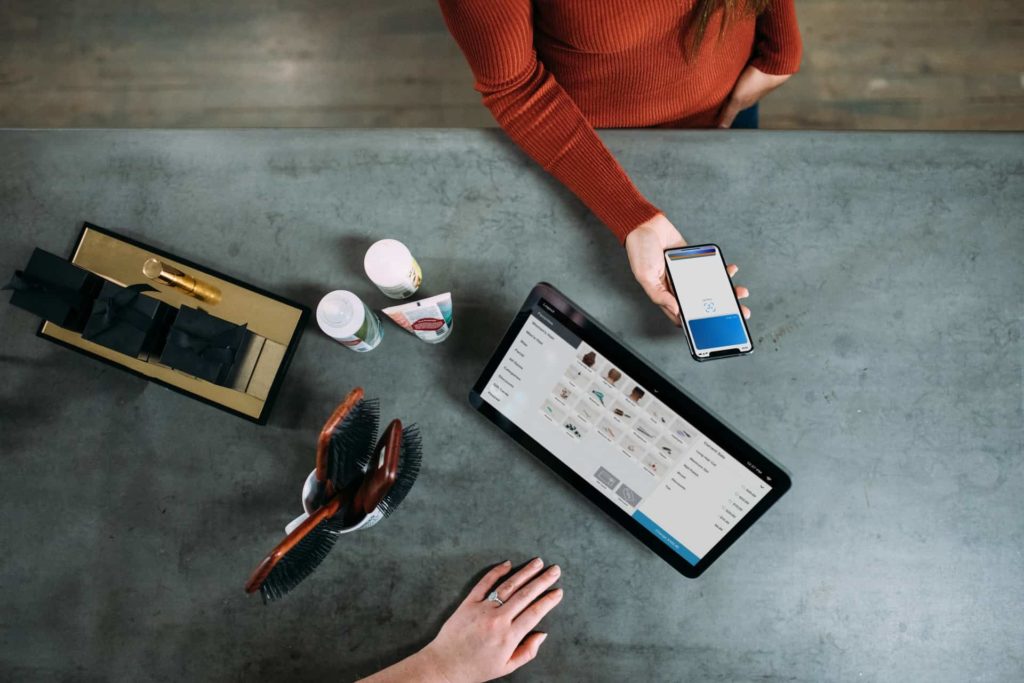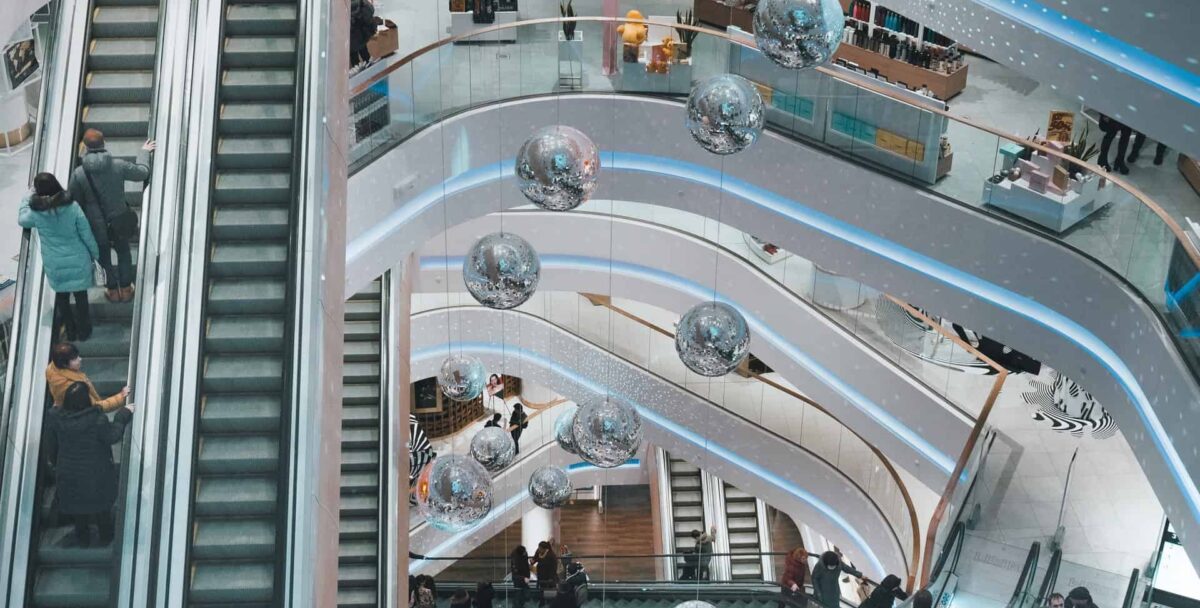According to the most recent 2021 IoT Use Case Adoption study, more and more Internet of Things (IoT) use cases are being adopted.
It’s not surprising that the IoT in retail market size is anticipated to reach USD 182.04 billion by 2028, given that 70% of retailers are optimistic that IoT will have a big impact on how they conduct business in the future.
Consumer habits, heavy demand for delivery services, skepticism of online transactions, and lack of technological proficiency are all issues that prevent vendors from succeeding in an environment where they could.
Smart retail promises to address these issues and give retailers and their consumers previously unheard-of advantages in the areas of revenue growth, cost reductions, and business process optimization.
Here are 8 innovative use cases of IoT in retail.
Is your business or organization growing, and are you looking for support? C&CTechnology Group is a top market distributor of ICT, Cybersecurity, and audio-visual solutions. Contact us today!
Related: Cybersecurity in the Workplace: Guide for Employees
Read-only Remote Asset Monitoring
It should come as no surprise that the most popular IoT use case is also the simplest.
Assets that are remotely connected in a read-only way are referred to as read-only remote asset monitoring (i.e., one can visualize the asset data, but one cannot send back any commands to the asset itself).
Due to its simplicity, this use case is one of the simplest and least expensive to set up.
You can also consider making your building a smart one. We at C&C Tech Group can assist you if you need help designing your business for optimal lighting, security, and performance.
Also, remote asset monitoring frequently replaces the labor-intensive, costly manual process of physically inspecting and recording asset conditions.
Facility Management
Keeping the store environment tidy, welcoming, secure, and appealing is one of the largest daily tasks for retailers.
Numerous IoT technologies exist that can be used to streamline these processes and lower associated expenses.
For efficient inventory management and prompt replenishment, facility managers can also use wireless IoT sensors to proactively monitor when consumable supplies are running short at entrances and throughout the store.
Energy management, which is crucial for customer comfort, operating costs, and sustainability, can now be easily optimized with the use of environmental sensors that keep tabs on:
- Temperature
- Lighting
- Ventilation
- Refrigeration.
The primary energy consumption drivers may be determined using this crucial environmental data, which also offers a 360-degree perspective of energy consumption trends, any abnormal energy consumption caused by dysfunctional devices, misused or overutilized infrastructure, and resource waste.
Automated Checkout
You’ve probably observed how clients are discouraged from buying from you by long lineups. Actually, retailers globally lose billions due to long lines.
Additionally, as a manager, it may seem counterproductive to pay several staff members to work during peak shopping hours.
When a consumer leaves the store, you can set up a system using IoT to scan the tags on each item. The cost of the items would then be added up by a checkout system, which would automatically take it from the customer’s mobile payment app.
Customers would be happier and more likely to enter your store if the checkout process was automated utilizing IoT devices, especially if they’re in a rush.
Related: 10 Best Smart Building Companies of 2022

Personalized Discounts
Additionally, you can leverage IoT to track the products a consumer has been browsing online and send them a customized discount when they visit your store.
What if a buyer browsed your sunglasses online before receiving a discount on their preferred sunglasses in-store?
You may customize each offer using IoT to increase your conversion rates rather than providing general discounts on a wide range of products.
In the end, finding unique methods to integrate IoT devices into your everyday business operations involves imagination and foresight, but the advantages of IoT in retail—as mentioned above—can help your company find creative ways to entice more worthwhile and devoted long-term customers.
Logistics and Supply Chain
IoT gives retailers unprecedented access to their inventory across shelves, trucks, and warehouses, helping them increase efficiency, cut costs, and provide better customer service.
Items can be tracked from “floor to store” via connected sensors.
The precise location of an item, the time it took to travel between different stages of the SCM lifecycle, and even how quickly a particular delivery truck is moving may all be determined in real-time by a number of IoT sensors.
This makes it possible to spot bottlenecks, plan for emergencies, and choose faster delivery routes.
Monitoring of The Cold Chain
Grocers lose an average of $70 million a year to perishable food spoilage alone, which causes a major loss in income for the retail grocery industry.
In order to safeguard perishable goods, guarantee optimum freshness, and minimize waste, environmental sensors can monitor ambient conditions such as:
- Temperature
- Humidity
- Air quality
- Light intensity
- Other environmental factors inside a storage facility, cargo container, delivery vehicle, or in-store.
Smart Shelves
Retailers put a lot of time and effort into making sure that products are never out of stock and that they aren’t misplaced on different shelves.
Both of these operations are automated by smart shelves, which also keep an eye out for any theft.
Smart shelves using RFID tags and weight sensors may scan products on both display and stock shelves to alert staff when supplies are running short or when products are positioned wrongly on a shelf.
This not only saves time but also gets rid of the manual mistakes that lead to shortages and overstocking.
Related: 10 Best Security Companies for Your Business
Automated Robots
Although trusting a robot to serve as your customer service agent can be a little unsettling, it’s also a great chance to reduce the number of tedious jobs that your team must perform.
The newest robot employee at Lowe’s, OSHbot, assists consumers in finding specific products and offers details on sales and inventory.
Additionally, these robots are bilingual and can respond to inquiries in both English and Spanish.
In Conclusion
Since consumers are becoming more accustomed to the new technological advances in retail stores, it’s logical to foreshadow that the more in demand these services will be.
If you have a business, it’s going to be indispensable to have some sort of the cutting-edge technologies mentioned already above.
With AI getting more advanced, the future holds a lot of new and exciting things for consumers. The time is now if you want to add these technologies to your business!
Do you seek to maximize the effectiveness of your structure? Find out more information about our Smart Building Solutions for your business!
Last Updated on August 2, 2022 by Josh Mahan




